Asterales
plant order
Introduction
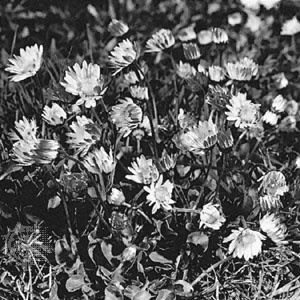 daisy order of flowering plants, containing 11 families and some 26,000 species. The major families are Asteraceae and Campanulaceae (including Lobeliaceae), with far fewer species in the remaining families of Goodeniaceae, Donatiaceae (including Stylidiaceae), Menyanthaceae, Calyceraceae, Rousseaceae (including Carpodetaceae), Pentaphragmataceae, Alseuosmiaceae, Phellinaceae, and Argophyllaceae.
daisy order of flowering plants, containing 11 families and some 26,000 species. The major families are Asteraceae and Campanulaceae (including Lobeliaceae), with far fewer species in the remaining families of Goodeniaceae, Donatiaceae (including Stylidiaceae), Menyanthaceae, Calyceraceae, Rousseaceae (including Carpodetaceae), Pentaphragmataceae, Alseuosmiaceae, Phellinaceae, and Argophyllaceae.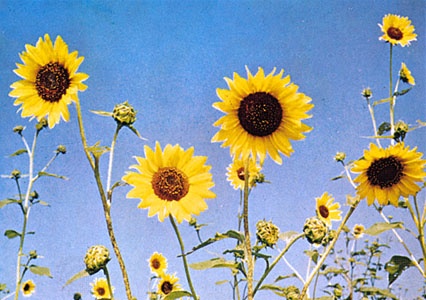 The most important food plant in Asterales is Lactuca sativa ( lettuce), a European cultigen. Second in importance is Helianthus annuus ( sunflower), a native of North America. Sunflower seeds are excellent poultry feed, and a light-golden oil made from them is used as a salad oil and in cooking as well as in the manufacture of margarine, soap, paint, and varnish. Oil cake is fed to livestock, and the whole plant is used as silage. Flowers of Carthamus tinctorius ( safflower) are the source of red and yellow dyes, and the seeds produce an oil that is used in cooking and in the production of soap, paint, and varnish. Several other members of the order, including Cynara scolymus ( artichoke) and Helianthus tuberosus (Jerusalem artichoke), are of lesser importance as food plants.
The most important food plant in Asterales is Lactuca sativa ( lettuce), a European cultigen. Second in importance is Helianthus annuus ( sunflower), a native of North America. Sunflower seeds are excellent poultry feed, and a light-golden oil made from them is used as a salad oil and in cooking as well as in the manufacture of margarine, soap, paint, and varnish. Oil cake is fed to livestock, and the whole plant is used as silage. Flowers of Carthamus tinctorius ( safflower) are the source of red and yellow dyes, and the seeds produce an oil that is used in cooking and in the production of soap, paint, and varnish. Several other members of the order, including Cynara scolymus ( artichoke) and Helianthus tuberosus (Jerusalem artichoke), are of lesser importance as food plants.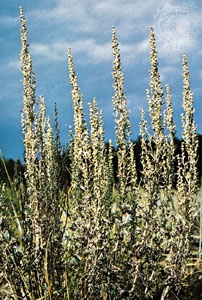 pyrethrum, an insecticide that does not produce the environmental problems associated with many synthetic products, is obtained from the flowers of several species of Chrysanthemum, particularly Chrysanthemum cinerariaefolium. Extracts from several species of wormwood, notably Artemisia cina from the Middle East, have been much used to expel intestinal worms (e.g., pinworms (pinworm)), the source of the common name of this plant. A. absinthium is the source of a poisonous oil used to give the liqueur absinthe its distinctive character. A sesquiterpene extracted from A. annua (a Eurasian weed) is increasingly used in the treatment of quinine-resistant malaria.
pyrethrum, an insecticide that does not produce the environmental problems associated with many synthetic products, is obtained from the flowers of several species of Chrysanthemum, particularly Chrysanthemum cinerariaefolium. Extracts from several species of wormwood, notably Artemisia cina from the Middle East, have been much used to expel intestinal worms (e.g., pinworms (pinworm)), the source of the common name of this plant. A. absinthium is the source of a poisonous oil used to give the liqueur absinthe its distinctive character. A sesquiterpene extracted from A. annua (a Eurasian weed) is increasingly used in the treatment of quinine-resistant malaria.Asterales belongs to the core asterid clade (organisms with a single common ancestor), or sympetalous lineage of flowering plants, in the Asterid II group of the Angiosperm Phylogeny Group II (APG II) botanical classification system (see angiosperm). The families in the order have been linked genetically, through chemical characteristics (e.g., storage of carbohydrates as the oligosaccharide inulin, presence of ellagic acid) and, within the sympetalous asterid families, by having a specialized mechanism known as plunger pollination, or secondary pollen presentation.
Asteraceae
Range and common species
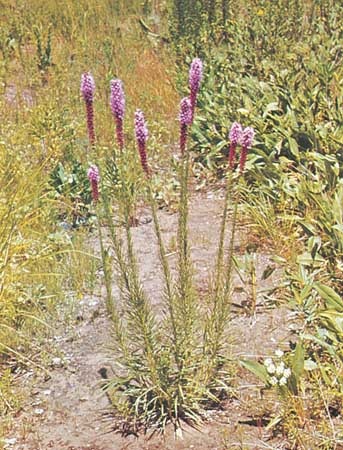 Asteraceae is a huge family of flowering plants, with more than 1,600 genera and nearly 24,000 species. The only other family with a comparable number of species is Orchidaceae, the orchid family. Members of Asteraceae occur from the Arctic to the Antarctic and from above the mountain timberline to the ocean shores, though most species are herbs found in sunny places in temperate and subtropical regions. In addition to the more ordinary habitats, different species have adapted to growth in harsher locations, such as sand dunes; cliff crevices; talus slopes; seleniferous, gypsiferous, or alkaline soils; and fields or disturbed sites around human habitations. A few species are aquatic.
Asteraceae is a huge family of flowering plants, with more than 1,600 genera and nearly 24,000 species. The only other family with a comparable number of species is Orchidaceae, the orchid family. Members of Asteraceae occur from the Arctic to the Antarctic and from above the mountain timberline to the ocean shores, though most species are herbs found in sunny places in temperate and subtropical regions. In addition to the more ordinary habitats, different species have adapted to growth in harsher locations, such as sand dunes; cliff crevices; talus slopes; seleniferous, gypsiferous, or alkaline soils; and fields or disturbed sites around human habitations. A few species are aquatic.In most temperate regions more than 10 percent of the species of flowering plants belong to Asteraceae. In tropical regions the percentage is smaller but still significant. The greatest centres of diversity in the order are the dry highlands of Mexico, where the Heliantheae tribe is especially well represented, and the Mediterranean–Middle East region.
 The greatest economic importance of Asteraceae lies in the use of many of its members as garden ornamentals. Species and garden hybrids of Aster (Michaelmas daisy), Bellis (English daisy), Callistephus ( China aster), Chrysanthemum ( Chrysanthemum, daisy), Cosmos ( Cosmos), Dahlia ( Dahlia), Helianthus ( sunflower), Rudbeckia ( coneflower, black-eyed Susan), Tagetes ( marigold), and Zinnia ( zinnia) are well-known garden favourites. Achillea ( yarrow), Ageratum ( ageratum), Anaphalis (pearly everlasting), Anthemis (golden marguerite), Artemisia ( wormwood), Calendula (pot marigold), Centaurea (bachelor's button, or cornflower), Echinops (globe thistle), Erigeron (fleabane), Eupatorium (joe-pye weed, boneset, white snakeroot), Gaillardia (blanketflower), Helichrysum (strawflower, everlasting), Liatris (button snakeroot), Ratibida (one of several genera with the common name of coneflower), Santolina (lavender cotton), and Stokesia (Stokes' aster) are also familiar in gardens. The florists' cineraria, a popular wintertime potted flower, is Senecio cruentus, originally from the Canary Islands.
The greatest economic importance of Asteraceae lies in the use of many of its members as garden ornamentals. Species and garden hybrids of Aster (Michaelmas daisy), Bellis (English daisy), Callistephus ( China aster), Chrysanthemum ( Chrysanthemum, daisy), Cosmos ( Cosmos), Dahlia ( Dahlia), Helianthus ( sunflower), Rudbeckia ( coneflower, black-eyed Susan), Tagetes ( marigold), and Zinnia ( zinnia) are well-known garden favourites. Achillea ( yarrow), Ageratum ( ageratum), Anaphalis (pearly everlasting), Anthemis (golden marguerite), Artemisia ( wormwood), Calendula (pot marigold), Centaurea (bachelor's button, or cornflower), Echinops (globe thistle), Erigeron (fleabane), Eupatorium (joe-pye weed, boneset, white snakeroot), Gaillardia (blanketflower), Helichrysum (strawflower, everlasting), Liatris (button snakeroot), Ratibida (one of several genera with the common name of coneflower), Santolina (lavender cotton), and Stokesia (Stokes' aster) are also familiar in gardens. The florists' cineraria, a popular wintertime potted flower, is Senecio cruentus, originally from the Canary Islands.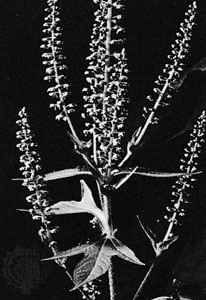 The ragweeds (ragweed) (Ambrosia), dandelions (dandelion) (Taraxacum), and thistles (thistle) (Carduus, Cirsium, and Onopordum) are the most troublesome weeds in Asteraceae. Ambrosia artemisiifolia (common ragweed) and Ambrosia trifida (giant ragweed) are two of the most significant plant species, causing the allergic reaction known as hay fever.
The ragweeds (ragweed) (Ambrosia), dandelions (dandelion) (Taraxacum), and thistles (thistle) (Carduus, Cirsium, and Onopordum) are the most troublesome weeds in Asteraceae. Ambrosia artemisiifolia (common ragweed) and Ambrosia trifida (giant ragweed) are two of the most significant plant species, causing the allergic reaction known as hay fever.The evolutionary success of Asteraceae may be due more to its arsenal of defensive secondary metabolites than to its morphology. It lacks the iridoid compounds found in other orders of the core asterid lineage of flowering plants, but it heavily exploits polyacetylenes, bitter sesquiterpenes (especially sesquiterpene lactones), terpenoid volatile oils, latex (in Lactuceae), several kinds of alkaloids (notably pyrrolizidine alkaloids in Senecioneae), and various other compounds. The polyacetylenes generally have cyclic, aromatic, or heterocyclic end groups, in contrast to the mainly aliphatic polyacetylenes of Campanulaceae. Tagetes (marigolds (marigold)) have a well-justified reputation for killing nematodes (nematode) in the soil by releasing terpenoid compounds from the roots.
Flowers (flower)
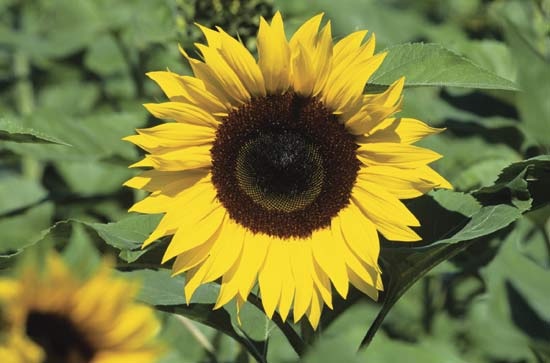 The most obvious and outstanding general feature of Asteraceae is that the flowers are grouped characteristically into compact inflorescences (inflorescence) (heads) that superficially resemble individual flowers. Each such head is ordinarily subtended by an involucre of small modified leaves (bracts). Furthermore, in more than half the members of the family, the flowers in the outermost row or rows of the head have a modified, mainly flat and elongate corolla that resembles an individual petal of most other flowers. These “petals” of a daisy or sunflower are actually the outermost flowers of the head. A sunflower family head includes anywhere from 1 to more than 1,000 individual flowers (called florets), and the heads in turn can be grouped into more-complex secondary arrangements called capitulescences.
The most obvious and outstanding general feature of Asteraceae is that the flowers are grouped characteristically into compact inflorescences (inflorescence) (heads) that superficially resemble individual flowers. Each such head is ordinarily subtended by an involucre of small modified leaves (bracts). Furthermore, in more than half the members of the family, the flowers in the outermost row or rows of the head have a modified, mainly flat and elongate corolla that resembles an individual petal of most other flowers. These “petals” of a daisy or sunflower are actually the outermost flowers of the head. A sunflower family head includes anywhere from 1 to more than 1,000 individual flowers (called florets), and the heads in turn can be grouped into more-complex secondary arrangements called capitulescences.The flower petals of Asteraceae are joined together by their margins, forming a tubular or strap-shaped corolla (a sympetalous corolla) that often has apical teeth representing the petal tips. The other floral parts are attached to the top of the ovary rather than beneath it. The calyx (sepals) of Asteraceae is so highly modified, in contrast to that of other orders, that it is given a different name, the pappus. The pappus consists of one to usually several or many dry scales, awns (small pointed processes), or capillary (hairlike) bristles; in some the scales may be joined by their margins to form a crownlike ring at the summit of the ovary. In only a few genera (e.g., Marshallia) does the calyx consist of five regularly placed scales that are obviously homologous with sepals. The pappus is often completely wanting. When the pappus consists of numerous capillary bristles, as in Taraxacum officinale ( dandelion), it facilitates distribution of the achenes (achene) (seedlike fruits) by the wind. In some other genera, such as Bidens (beggar-tick), the pappus awns are barbed, which permits them to stick in fur or clothing, and some achenes are thus transported by animals.
The pistil (female structure) is composed of two carpels, united to form a compound ovary with a terminal style. There is usually a nectar-producing region (nectary) in the form of a minute ring surrounding the style atop the ovary. The ovary has only one locule (seed cavity), with a single ovule arising from the base. The fact that the ovule is basal is the best single feature distinguishing Asteraceae from the related Calyceraceae, which also has involucrate heads with a similar pollen-presentation mechanism but has the ovule pendulous from the top of the ovary.
As in most flowering plants, the ovule is curved back on itself so that the apical opening (micropyle) is alongside the stalk (funiculus), a condition known as anatropy. As in most other asterids, the ovule has a single, rather thick outer covering layer (integument)—the forerunner of the seed coat—rather than the double integument found in so many other orders. The seed has virtually no endosperm; its reserve food is stored largely in the two cotyledons (seed leaves) of the embryo.
The sequence of flowering within individual heads is always centripetal, characteristic of a racemose (indeterminate) inflorescence. This means that the outer flowers bloom first, with a progressive spiral of flowering toward the centre of the head. The head is in essence a compact shoot, with spiral (alternate-leaved) phyllotaxy. The involucral bracts are more or less modified leaves, and very often they are green and leafy in texture. The secondary arrangement of heads (capitulescences) of Asteraceae is typically cymose (determinate). The terminal head on the main axis blooms first, followed by the terminal heads of the main branches. After that the sequence is mixed, with both cymose and racemose components. Only rarely, and then clearly as a derived condition, is the secondary inflorescence racemose throughout, with the lowest heads blooming first and the terminal ones last.
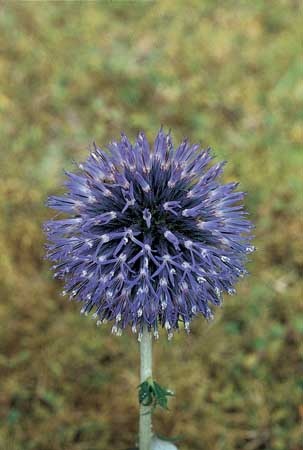 Individual heads of most members of Asteraceae are said to be discoid, radiate, disciform, or ligulate, according to the kinds of flowers they contain. The simplest type is the discoid head, in which the flowers have a regular, tubular corolla, with generally four or five apical teeth representing the tips of the petals. This kind of flower is called a disk flower. Ordinarily, the flowers in a discoid head are all perfect (bisexual) and fertile. Thistles (thistle) and ageratums (ageratum) are examples of Asteraceae species with discoid heads.
Individual heads of most members of Asteraceae are said to be discoid, radiate, disciform, or ligulate, according to the kinds of flowers they contain. The simplest type is the discoid head, in which the flowers have a regular, tubular corolla, with generally four or five apical teeth representing the tips of the petals. This kind of flower is called a disk flower. Ordinarily, the flowers in a discoid head are all perfect (bisexual) and fertile. Thistles (thistle) and ageratums (ageratum) are examples of Asteraceae species with discoid heads.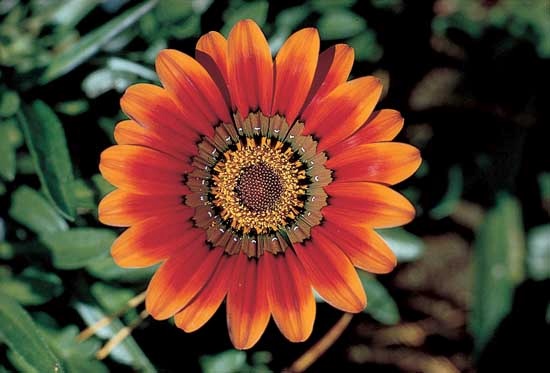 The radiate head has disk flowers in the centre surrounded by one or more marginal rows of another kind of flower, the ray flower. The corolla of ray flowers is very irregular. It is tubular at the base but prolonged on the outer side into a generally flat projection, the ray, or ligule. These rays are the petal-like parts, in a comparison of the flower head to an ordinary flower. The ray in radiate heads represents only three lobes of the corolla; often there are two or three minute apical teeth. The other two corolla teeth (those toward the centre of the head) are much reduced or, often, wanting. Ray flowers in radiate heads are either pistillate (female) or neutral (with a vestigial, nonfunctional ovary and no style). Disk flowers in a radiate head usually have both sexes, but sometimes they are functionally staminate, with a normal pollen-presentation mechanism but without a functional ovary.
The radiate head has disk flowers in the centre surrounded by one or more marginal rows of another kind of flower, the ray flower. The corolla of ray flowers is very irregular. It is tubular at the base but prolonged on the outer side into a generally flat projection, the ray, or ligule. These rays are the petal-like parts, in a comparison of the flower head to an ordinary flower. The ray in radiate heads represents only three lobes of the corolla; often there are two or three minute apical teeth. The other two corolla teeth (those toward the centre of the head) are much reduced or, often, wanting. Ray flowers in radiate heads are either pistillate (female) or neutral (with a vestigial, nonfunctional ovary and no style). Disk flowers in a radiate head usually have both sexes, but sometimes they are functionally staminate, with a normal pollen-presentation mechanism but without a functional ovary.Occasional mutant forms of species that normally have radiate heads have most or all of the disk flowers more or less transformed into ray flowers, with only a few (or no) normal disk flowers in the centre. These “double-flowered” forms do not long survive competition in nature, but they are valued and perpetuated horticulturally because of their more showy flower heads. The “daisy-flowered” chrysanthemums (Chrysanthemum), with only a single marginal row of ray flowers, have the normal type of radiate head, but the more commonly cultivated kinds of chrysanthemums are double-flowered. The garden Dahlia is another member of Asteraceae that is cultivated in both normal and double-flowered types, with the double-flowered ones being more frequent. China asters (China aster), marigolds (marigold), and zinnias (zinnia) are also commonly cultivated in double-flowered forms.
 The disciform head, a special derivative of the radiate type, resembles the discoid head in lacking the marginal rays, but the outer flowers are pistillate, with a tubular, rayless corolla. Plants of the genus Gnaphalium (cudweed) have disciform heads. Some varieties of a species, such as Erigeron compositus (cutleaf fleabane), show a complete series of transitions from the radiate to the disciform type of head, with varying degrees of suppression of the ligule on the pistillate flowers.
The disciform head, a special derivative of the radiate type, resembles the discoid head in lacking the marginal rays, but the outer flowers are pistillate, with a tubular, rayless corolla. Plants of the genus Gnaphalium (cudweed) have disciform heads. Some varieties of a species, such as Erigeron compositus (cutleaf fleabane), show a complete series of transitions from the radiate to the disciform type of head, with varying degrees of suppression of the ligule on the pistillate flowers.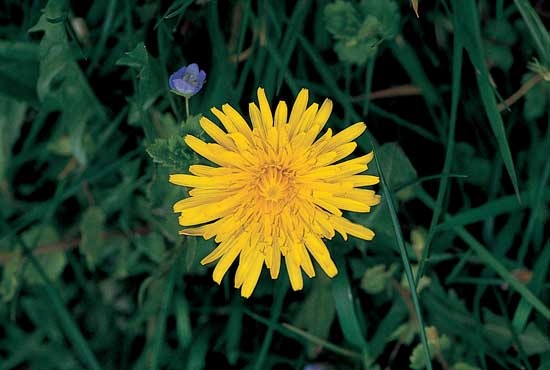 Radiate, discoid, and disciform heads occur in various tribes of Asteraceae. The ligulate head, on the contrary, is almost entirely restricted to one tribe, Lactuceae (Cichorieae), and is found in all members of that tribe. Ligulate heads consist entirely of one kind of flower, the ligulate flower. The dandelion is a familiar plant with ligulate heads. Ligulate flowers superficially resemble the ray flowers of radiate heads in having the corolla tubular at the base and prolonged on the outer side into a flat, strap-shaped ligule. They differ from ray flowers in being ordinarily perfect (bisexual) and, especially, in the structure of the ligule itself, which consists of all five lobes of the corolla and generally shows five terminal teeth. It is as if a tubular corolla had been slit down the upper side of the leaf and laid out flat.
Radiate, discoid, and disciform heads occur in various tribes of Asteraceae. The ligulate head, on the contrary, is almost entirely restricted to one tribe, Lactuceae (Cichorieae), and is found in all members of that tribe. Ligulate heads consist entirely of one kind of flower, the ligulate flower. The dandelion is a familiar plant with ligulate heads. Ligulate flowers superficially resemble the ray flowers of radiate heads in having the corolla tubular at the base and prolonged on the outer side into a flat, strap-shaped ligule. They differ from ray flowers in being ordinarily perfect (bisexual) and, especially, in the structure of the ligule itself, which consists of all five lobes of the corolla and generally shows five terminal teeth. It is as if a tubular corolla had been slit down the upper side of the leaf and laid out flat.Still another kind of flower is found nearly throughout another tribe, Mutisieae. This tribe is largely tropical, and only one of its genera, Gerbera, is familiar in cultivation in temperate regions. Most members of Mutisieae have some or all of the corollas bilabiate (two-lipped), with a large, three-lobed (sometimes four-lobed) outer lip and a smaller, two-lobed (or one-lobed) inner lip. These bilabiate flowers may be either pistillate or perfect. When pistillate, they are always external to any perfect flowers that may be present in the head. Often they are much like ordinary ray flowers, except that there are two small teeth at the top of the corolla tube, opposite the ligule. The Mutisieae tribe shows every degree of transition from the typical disk flower to the typical ray flower to the typical ligulate flower.
The leaves (leaf) of Asteraceae are simple or occasionally compound, and their arrangement along the stem may be opposite, alternate, or, less commonly, whorled; not infrequently they are opposite toward the base of the stem and alternate above.
pollination
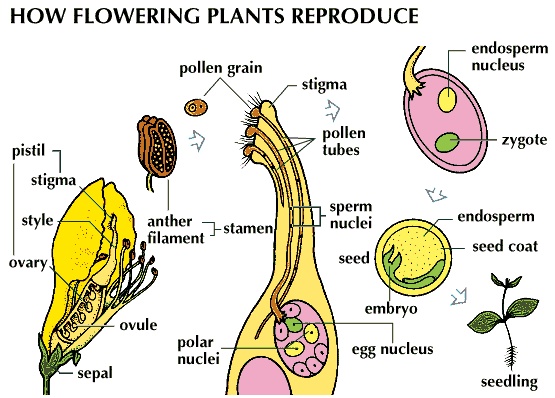 In the Asteraceae system of pollination, the stamens either initially stick together or else become partly or completely joined to form a tube around the style. As the style elongates within the anthers, it pushes the pollen out on specialized hairs, an apical hair tuft, or a pollen-gathering cup. After the pollen is presented to pollinators, the style branches then separate, and the pollen-receiving surfaces (stigmas) become receptive. The stigmas are usually arranged in lines along the inner margins of these branches, well back from the sterile tips (style appendages), which are the structures that push out the pollen. The stigmatic lines later become exposed to the air as the style branches spread apart.
In the Asteraceae system of pollination, the stamens either initially stick together or else become partly or completely joined to form a tube around the style. As the style elongates within the anthers, it pushes the pollen out on specialized hairs, an apical hair tuft, or a pollen-gathering cup. After the pollen is presented to pollinators, the style branches then separate, and the pollen-receiving surfaces (stigmas) become receptive. The stigmas are usually arranged in lines along the inner margins of these branches, well back from the sterile tips (style appendages), which are the structures that push out the pollen. The stigmatic lines later become exposed to the air as the style branches spread apart.Pollination is effected by diverse agents, most commonly various sorts of insects. The individual flowers of most Asteraceae species are relatively small, and the nectar within the corolla tube is thus readily available to most insect visitors; no long tongue is needed to reach it. The pollen itself is freely exposed on the surface of the head, and a single head is likely to be visited by several kinds of insects. A minority of the members of the family are wind-pollinated; these generally have small and inconspicuous flower heads. Some species are pollinated by both wind and insects. Solidago speciosa, one of the common goldenrods (goldenrod) of the eastern United States, for example, produces a considerable amount of airborne pollen in addition to attracting insect visitors. The goldenrods, like the ragweeds, generally flower in late summer and fall. Because they are common and conspicuous when the ragweeds release pollen into the wind, they often have been blamed for the allergies that are actually caused primarily by ragweed.
Relatively few species are regularly self-pollinated; the genus Psilocarphus is an example. Bird pollination is also uncommon, the tropical American genus Mutisia being a notable exception.
fruit and seeds
Various genera and individual species of the order are known to be reproduced by apomixis (the setting of seed without fertilization), either completely or in addition to normal sexual means. The genus Antennaria (pussy-toes) (pussytoes), well known in the Northern Hemisphere, is dioecious, and some of the species are represented in large parts of their range only by pistillate plants. In this genus normal sexual reproduction yields equal numbers of staminate and pistillate plants, but apomictic reproduction yields only pistillate plants. Among the members of Asteraceae, apomixis is often associated with polyploidy (the presence of three or more complete sets of chromosomes (chromosome) in every cell) and a past history of hybridization (hybrid).
The members of Asteraceae produce a type of fruit known as achene, which is dry and single-seeded and does not open at maturity. The apparent seeds of the sunflower, for example, are actually achenes. The hull is the achenial wall, and the actual seed coat surrounding the embryo is a thin, papery layer. In Asteraceae seed dispersal (dispersion) it is really the achenes (each containing a seed) that are dispersed.
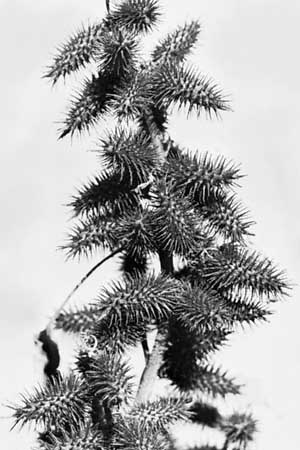 The seeds of many Asteraceae species are distributed by wind, having fluffy or parachute-like structures (mainly the pappus) that provide buoyancy. In others, such as Coreopsis ( tickseed), the achene is thin and flat, and the surface area is increased by the presence of an even thinner expanded margin (wing). Some species have barbed structures or are provided with hooks or spines, as in Xanthium strumarium ( cocklebur) or Arctium (burdock) (burdock), engaging humans or animals as means of transport. In cocklebur and burdock, the protective bracts surrounding the developing head (involucre) are provided with hooks, and the whole head is distributed intact. The hooked heads of burdock are said to have inspired the invention of Velcro, a modern fabric fastener utilizing many tiny hooks that attach to a base containing numerous small loops.
The seeds of many Asteraceae species are distributed by wind, having fluffy or parachute-like structures (mainly the pappus) that provide buoyancy. In others, such as Coreopsis ( tickseed), the achene is thin and flat, and the surface area is increased by the presence of an even thinner expanded margin (wing). Some species have barbed structures or are provided with hooks or spines, as in Xanthium strumarium ( cocklebur) or Arctium (burdock) (burdock), engaging humans or animals as means of transport. In cocklebur and burdock, the protective bracts surrounding the developing head (involucre) are provided with hooks, and the whole head is distributed intact. The hooked heads of burdock are said to have inspired the invention of Velcro, a modern fabric fastener utilizing many tiny hooks that attach to a base containing numerous small loops.Other means of seed dispersal are less common. The achenes of species that grow in wet places may be carried in mud on the feet of migrating waterfowl; those of some streamside species are buoyant, achieving dispersal by floating until they become waterlogged. In Centaurea and some related genera, the achenes are attractive to ants, which carry them about and feed on special parts of the wall. The achenes of some field weeds have been widely distributed by becoming mixed with the seeds of cultivated crops. Many other members of the order have no obvious means of seed dispersal.
Campanulaceae
 Campanulaceae, or the bellflower family, is worldwide in distribution and includes 84 genera and about 2,400 species. It also includes species that were formerly placed in Lobeliaceae. Campanulaceae are recognized by their white latex, often rather soft leaves and by flowers with an inferior ovary and plunger pollination mechanism. The fruits ripen in dry (capsule) or fleshy (berry) form, producing many small seeds. In bellflowers the flowers are bell-shaped and radially symmetrical (all petals alike in shape and size), and the anthers are separate, with the pollen held by hairs along the style.
Campanulaceae, or the bellflower family, is worldwide in distribution and includes 84 genera and about 2,400 species. It also includes species that were formerly placed in Lobeliaceae. Campanulaceae are recognized by their white latex, often rather soft leaves and by flowers with an inferior ovary and plunger pollination mechanism. The fruits ripen in dry (capsule) or fleshy (berry) form, producing many small seeds. In bellflowers the flowers are bell-shaped and radially symmetrical (all petals alike in shape and size), and the anthers are separate, with the pollen held by hairs along the style.Many members of Campanulaceae are prized for their beauty. The bellflower genus, Campanula (more than 400 species, with some 100 in Turkey), contains many cultivated ornamentals. C. garganica (Adriatic bellflower) and C. persicifolia (willow bellflower), with origins in Europe and northern Asia, have yielded several cultivars ranging in colour from white to blue. C. carpatica (tussock bellflower) of the Carpathian Mountains forms clumps 45 cm (18 inches) tall. Species native to eastern North America and grown in gardens include C. rotundifolia (bluebell) and C. americana (tall bluebell). C. rapunculoides (creeping bellflower) is a notorious garden weed. Of the roughly 260 species of Wahlenbergia (tuftybell) (widely distributed from western Europe to the Southern Hemisphere), 8 are under cultivation. Cyananthus (trailing bellflower) of the Himalayas is known for its mat-forming species.
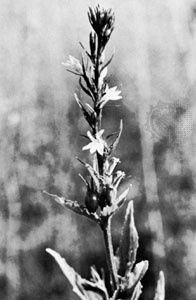 Familiar Lobelia species include L. cardinalis ( cardinal flower), which displays a brilliant red corolla, in contrast with the blue or white colours of the majority of related species. L. inflata ( Indian tobacco) is native to eastern and central North America and has a tobacco taste; it was used as an emetic by Amerindians. This and other Lobelia species yield an alkaloid (lobeline) useful as a remedy against nicotine addiction. Many of the tropical New World lobelioids, such as Centropogon and Siphocalymus, each with more than 200 species, have extremely attractive flowers, though few have been cultivated. Many have bright red, yellow, or orange flowers, with slightly to strongly curved corollas that correspond to the curvature of the bill of the hummingbird species that pollinate them. In Hawaiian species of Clermontia, the curving corolla tube also matches the bill of the pollinating bird, the honeycreeper.
Familiar Lobelia species include L. cardinalis ( cardinal flower), which displays a brilliant red corolla, in contrast with the blue or white colours of the majority of related species. L. inflata ( Indian tobacco) is native to eastern and central North America and has a tobacco taste; it was used as an emetic by Amerindians. This and other Lobelia species yield an alkaloid (lobeline) useful as a remedy against nicotine addiction. Many of the tropical New World lobelioids, such as Centropogon and Siphocalymus, each with more than 200 species, have extremely attractive flowers, though few have been cultivated. Many have bright red, yellow, or orange flowers, with slightly to strongly curved corollas that correspond to the curvature of the bill of the hummingbird species that pollinate them. In Hawaiian species of Clermontia, the curving corolla tube also matches the bill of the pollinating bird, the honeycreeper.Other families
Goodeniaceae, or the goodenia family, includes 12 genera and 440 species ranging from herbs to somewhat woody plants. The family is centred in Australia, where the 180 species of Goodenia occur. Scaevola includes 130 species and is also centred in Australia but has at least a few species of pantropical beach plants along tropical seashores. The family has alternate (spiral) leaves, strongly bilaterally symmetric flowers with a plunger pollination mechanism, and an inferior ovary. The corolla is often divided to the base on one side, and the petals have marginal wings that may make each look trilobed. Several herbaceous species of Scaevola are important ornamentals, especially as basket plants.
Stylidiaceae, or the trigger plant family, has 5 genera and 240 species native to Southeast Asia, Malesia, Australia, and southern South America. They are usually rosette herbs with distinctive flowers that have just one plane of symmetry. Their flowers have two stamens that are attached to the style, with the anthers near the stigma, and the whole complex triggers the explosive release of pollen on visiting insects. The largest genus is Stylidium, with 220 species.
Menyanthaceae (buckbean), or the bog bean family, contains mostly aquatic herbs, with 5 genera and about 60 species distributed worldwide. Members of this family have simple to palmately compound leaves with broad bases. The flowers are regular (many lines of symmetry), fairly large, and heterostylous (two floral morphs on different plants with corresponding differences in style and stamen length). The flowers of Menyanthaceae lack the plunger pollination of most other families in Asterales, though this may represent an evolutionary loss rather than an unspecialized character of the family. Also, the ovary of the flower is superior or partly inferior, unlike most other members of the order, which have inferior ovaries. Despite these differences with other members of Asterales, members of Menyanthaceae store carbohydrates as inulin like other members of the order, and the iridoid alkaloids they possess are different from alkaloids found in species of Gentianales, the order where they were formerly placed. Nymphoides (water-fringe) includes 40 aquatic species that occur in temperate and tropical regions. The floating leaves are reminiscent of Nymphaea ( water lily).
Calyceraceae, or the Calycera family, contains 4 genera and 60 species of Central and South American herbs. The family is most closely related to Asteraceae, with flowers arranged in heads that open from the outside of the head inward. The flowers are small and regularly symmetric, with sepals that either are transformed into spines or else are thick-spongy. The outer layer of the tubular corolla is photosynthetic (photosynthesis), the stamens are free, and the ovary is inferior. As with Asteraceae, the family has plunger pollination mechanisms and the ovary has two carpels, with only one ovule developing into a seed.
- L. Martov
- loach
- loading
- Loango, Kingdom of
- Loa River
- Loasaceae
- Lobachevsky, Nikolay Ivanovich
- Lobamba
- Lobanov-Rostovsky, Aleksey Borisovich, Knyaz
- Lobatse
- lobbying
- lobed comb jelly
- L'Obel, Matthias de
- Lobengula
- Lobi
- Lobito
- Lobkowitz, Wenzel Eusebius, Fürst (prince) von
- lobopod
- lobotomy
- lobster
- lobster pot
- local area network
- Local Church, the
- local colour
- Local Group